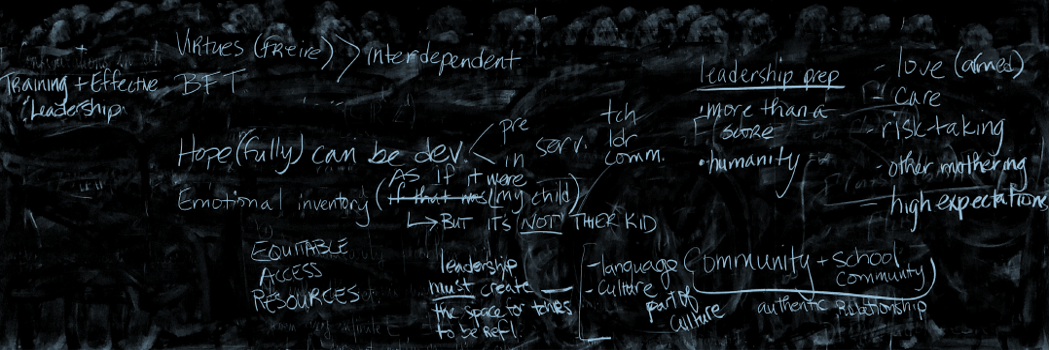There is a refrain throughout Jeff Duncan-Andrade’s talk that looms heavily over my head as I consider our collective fate (as a nation//as a species). At many points he focused his audience on the precipice of an enormous if..
“If we are aiming to be a pluralistic and multi-racial society..” If.. If.. If.. He told us to avoid getting into ideology debates with amoral people. That it will always lead to a stalemate. So what do we do with a public education system hamstrung by the knotted purse strings of amoral people who are fully disinterested in cultivating a pluralistic and multi-racial democracy? Voting is the answer you say? I’ll be generous and say that answer might merit partial credit. Andrade himself said that we cannot “policy our way out of this.” This talk had me thinking back to the first days of my doctoral program when my cohort grappled with the philosophical/ideological roots of our public education system. What value is Andrade’s conjecture in the context of a public education system that has many different rationales baked into it? How can we engage with this enormous “if” when there seems to be such a national unwillingness to truly sit with the history of how state sponsored education has always been an instrument of stratification and genocide in this country?
That history necessitates the kind of critical consciousness Ginwright and Cammarota are calling for in their work in order to help children engage in educational institutions steeped in toxicity in ways that promote their healing and capacity for community and civic engagement. Cammarota (2011) tells us that social justice youth development “requires the healing of youth identities by involving them in social justice activities that counter oppressive conditions preventing healthy self-identification. Youth also attain empathy for those suffering beyond their immediate communities. The three-step approach of self, community, and global awareness operates to expand youth consciousness to higher levels of social criticality and human compassion. The intended outcomes are young people with consciousnesses that facilitate academic achievements and social activism.” But why is engagement in school the goal? Can we imagine possibilities for young people beyond the cultural artifact of “schooling” as we know it? I understand that he has to fit his scholarship into someone else’s imagination.. but.. what would it mean to stop using “academic achievement” as an indicator of an “intervention’s” value? I appreciate that Ginwright focuses more broadly on youth and community well being in his work and am reminded of Andrade’s reminder that “we measure what matters.”
Though I am a teacher and a student, academic achievement doesn’t matter to me. I don’t want to track grades. I want to track hope. I want to track joy. I want to track curiosity. I want to track freedom. I want to track commitment to interrupting oppression. What does the world look like when these are the things we track? What do young people’s days look like when these are the things that matter? What does our society look like when these are the things we attempt to quantify and assess?





Lydia, your response just had me imagining how healing it would be for me to walk around with a clipboard and put checkmarks nexts to kids’ names when they exhibited hope, curiosity, empathy, etc. And then, spending so much energy bolstering those kids who did not show those traits. The effects of having schools with those values would be so beautiful.